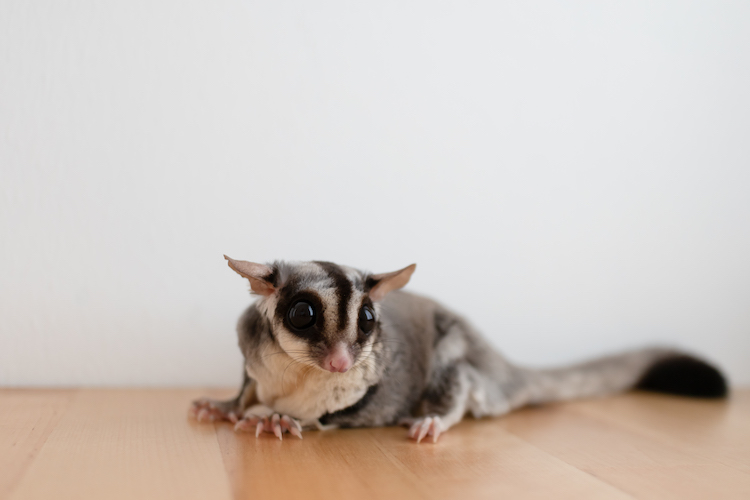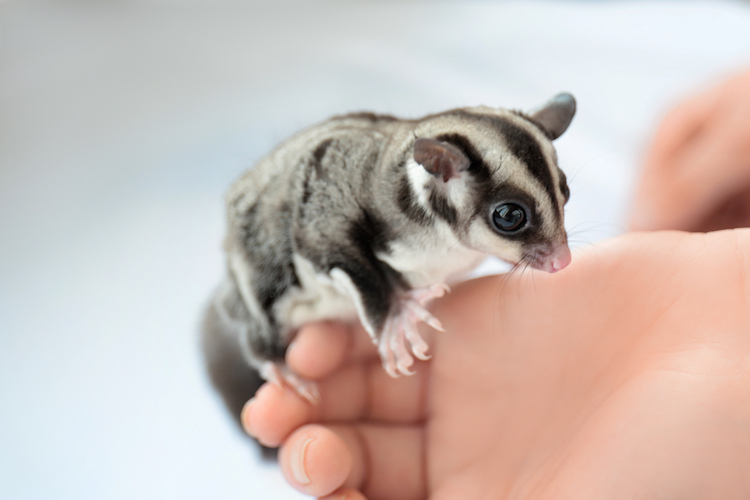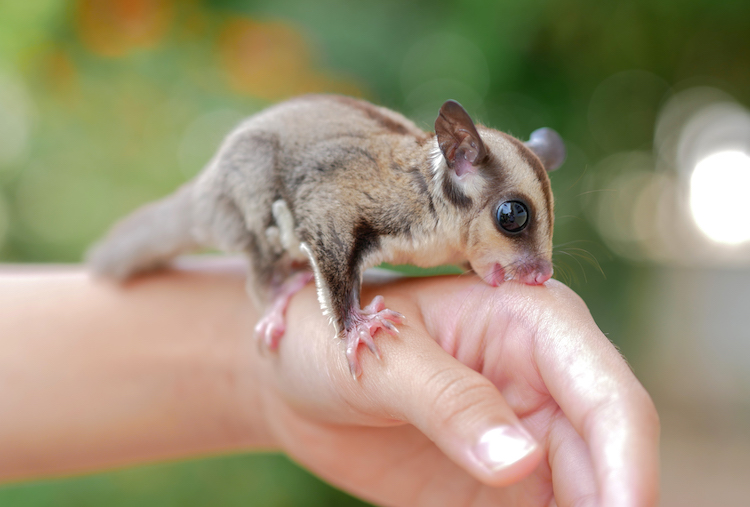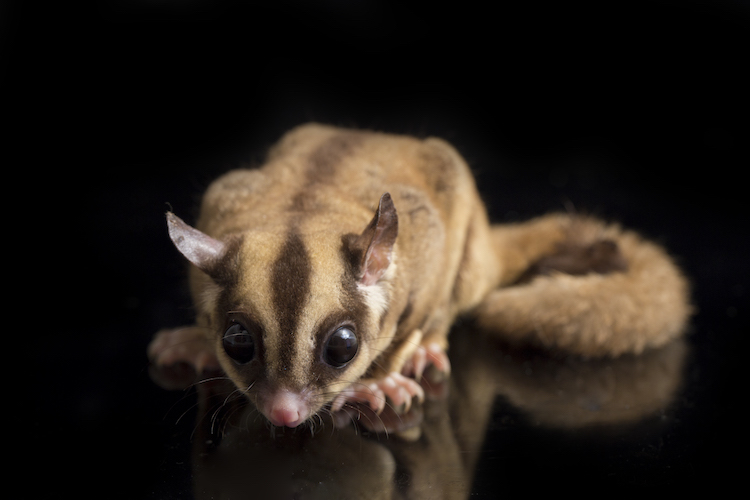How to Calm a Stressed Pet Sugar Glider – JOJO Pets

Image credit: Freepik.com
Pet sugar gliders are highly prone to stress and anxiety, but there are several ways to help them feel more at ease and reduce their stress levels.
If you notice your pet sugar glider showing signs of stress, here are some steps you can take to help them relax. Provide a soft and cosy resting place, such as a hammock or blanket, where your pet sugar glider can feel secure. Additionally, shower your pet sugar glider with extra attention and affection or offer them a delicious treat. If these steps don’t seem to be working, it might be best to consult a veterinarian for further guidance.
In this article, we will take a look at tips on how to calm a stressed pet sugar glider as well as explore the potential causes of pet sugar glider stress, and identify the common signs of pet sugar glider stress to watch out for.
Essential Steps for Calming a Stressed Pet Sugar Glider

Image credit: Freepik.com
Sugar gliders are sensitive creatures and can easily become stressed by various factors in their environment, leading to aggression or withdrawal. To help your pet sugar glider relax and regain comfort, follow these essential steps:
1. Create a Safe and Comfortable Space
Place your pet sugar glider’s cage in a quiet area away from loud noises and bright lights. Ensure the cage is spacious enough for your pet sugar glider to move freely.
2. Handle Your Pet Sugar Glider Regularly
Spend time every day gently petting and rubbing your pet sugar glider to get them accustomed to being handled. Speak softly to your pet sugar glider during these interactions and offer treats to reinforce positive associations.
3. Offer a Variety Of Foods
As sugar gliders are attracted to sweet foods, provide your pet sugar glider with a wide range of fruits, vegetables, and insects. This ensures they receive essential nutrients and helps prevent boredom.
4. Provide Toys and Playtime
Sugar gliders are known for their active and playful nature, so it’s essential to offer your pet sugar glider a variety of toys to keep them entertained. Engaging in daily playtime is a fantastic way to alleviate their stress and promote their overall well-being.
Allocate at least a few hours each day to play with your pet sugar glider. This regular interaction will not only help them become more comfortable with being handled but also prevent boredom and reduce stress levels. Even short sessions of a few minutes can make a significant difference in your pet sugar glider’s emotional health.
5. Create a Pet Sugar Glider Room
Due to their curious nature, it’s important to provide a safe and stimulating environment for your pet sugar glider. Instead of confining them to the same cage day after day, consider setting up a dedicated pet sugar glider room where they can freely explore and play. This setup will play a significant role in preventing stress and boredom.
To ensure your pet sugar glider’s safety, it’s vital to sugar glider-proof the room by removing any potential hazards that could harm your pet sugar glider and lead to accidents.
6. Ensure a Clean Cage
Regularly clean your pet sugar glider’s cage to maintain a hygienic and comfortable living space, as cleanliness can positively impact their stress levels.
7. Consider Getting a Companion
Sugar gliders are naturally social creatures, and in captivity, they thrive when they have companionship. Generally, they are happier when kept in pairs or groups, enjoying each other’s company. If you currently have a single pet sugar glider, consider getting them a friend to alleviate their stress levels and enhance their well-being.
When introducing a new glider to your existing pet sugar glider, proceed slowly and cautiously to prevent any potential conflicts or fighting.
8. Consult a Veterinarian
If your pet sugar glider’s stress persists despite your efforts, seek professional advice from a veterinarian to rule out any underlying health issues.
Signs of Pet Sugar Glider Stress

Image credit: Freepik.com
Recognising stress signs in your pet sugar glider is crucial for maintaining their well-being. If you observe any of the following signs, it’s important to take action to alleviate your pet sugar glider’s stress:
• Hiding
Sugar gliders often hide themselves when stressed. If you notice your pet sugar glider spending more time hiding than usual, it’s a clear indication of potential stress.
• Loss of appetite
Stress can greatly affect sugar gliders, leading to a loss of appetite and potential health issues. It is crucial to take prompt action if you observe your pet sugar glider not eating.
• Excessive grooming
When sugar gliders experience stress, they tend to groom themselves excessively as a coping mechanism. Excessive grooming can have detrimental consequences, including the development of bald spots and even open sores if left unchecked.
• Aggressive Behaviour
Stressed sugar gliders might exhibit aggression by resorting to biting or clawing when you attempt to handle them.
• Shivering
Shivering in sugar gliders can be a sign of feeling cold or frightened, both of which can contribute to stress.
Common Causes of Pet Sugar Glider Stress

Image credit: Freepik.com
Stress in pet sugar gliders can happen due to multiple factors in the environment. Among the most common causes are:
Lack of Social Interaction
Sugar gliders enjoy socialising and regular interaction with others. Inadequate socialisation can lead to heightened stress levels in pet sugar gliders.
Insufficient Physical Activity
Active by nature, pet sugar gliders require daily exercise to stay engaged. Without proper physical activity, they can become disinterested and stressed due to boredom.
Exposure to Cold
Sugar gliders hail from tropical regions and prefer warmth. Excessive cold can lead to torpor, a state where they lower their body temperature to conserve energy. This induces stress, loss of appetite, and reduced activity.
Dirty Environment
Sugar gliders are clean animals and they like a clean living space. A dirty cage can induce stress and health complications.
Disrupted Routine
Sugar gliders thrive on routine and can become stressed by abrupt changes, such as introducing new pets or altering their schedule.
Loud Noises
Sensitivity to loud noises is inherent in sugar gliders, leading to stress when exposed to such sounds consistently.
Inadequate Nutrition
A proper diet is key, with high protein and low sugar content being essential. Insufficient nourishment can contribute to heightened stress levels.
Unfamiliar Faces and Animals
Sugar gliders are wary of strangers, often hiding from unfamiliar faces. Frequent visitors or the presence of other animals can induce stress.
Conclusion
When you suspect your pet sugar glider is experiencing stress, there are several effective steps you can take to provide relief. Provide your pet sugar glider with lots of socialisation and exercise. Maintaining a clean cage and ensuring a balanced diet are also vital for your pet sugar glider’s overall health. However, if you find that your efforts aren’t alleviating your sugar glider’s stress, it’s advisable to consult a veterinarian to investigate any potential underlying medical issues.
Download the JoJo Pets app today for exclusive news and offers at https://jojo-pets.com/
